Ceramic vs. Porcelain Dinnerware: What You Need to Know + Our Top Picks
So in this theme, we’ve pulled together everything you must remember about picking the suitable basic or luxury dinnerware to make your meals feel extra meaningful for you and your loved ones.
Main Points
- A closer look at the materials: what makes each one special, where they fall short, and how they compare.
- An individual review of the difference between porcelain and ceramic plates, focusing on practical use, functionality, and design potential, so you can make up your mind what suits your lifestyle.
- Inspo from the dishware top brands out there available at MDMAISON.
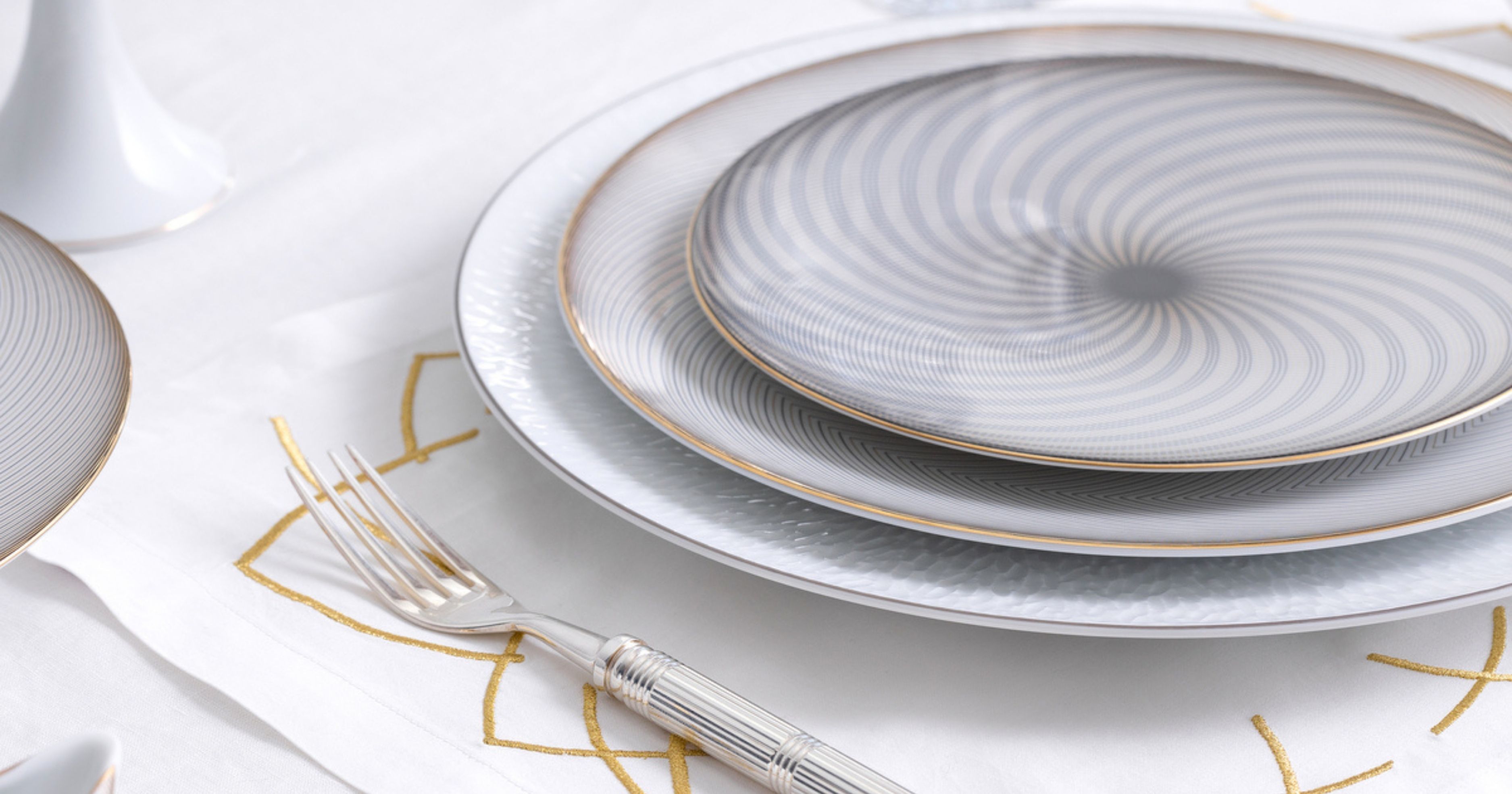
Ceramic vs. Porcelain Dinnerware: Essential Differences
We start with the basics: both materials share a common background — they’re produced from a clay foundation. Various techniques mean various textures, finishes, and overall quality. So, what is the difference between porcelain and ceramic dishes?
How exactly is porcelain produced?
Although individual manufacturers may guard their own formulas, additives, and firing methods, the core design remains the same: refined kaolin clay blended with quartz and feldspar. Standard blast temperatures hover around 1300–1400°C, although some manufacturers go beyond that to achieve a denser, more stable effect.
Firing at super high temps increases the thickness, producing a thinner, more elegant piece that’s hard, long-lasting, and non-porous. Some variations, like the Limoges, offer added features such as translucency. If you hold one of those plates up to the light, it actually glows a little.
How is ceramic dinnerware made?
It, along with its subtypes like faience, majolica, and pottery, is typically fired at lower temperatures up to 1200°C at most. The final products are still effective and dependable, but their structure is noticeably diverse: more porous, bulkier, and heavier in weight. Thanks to this texture, artists can play with endless glazes and dyes, turning each piece into a canvas for bold prints, whimsical designs, and colorful expression.
Turns out, there’s a lot more to the porcelain vs. ceramic debate than just production methods. Let’s break it down.
Ceramic Dinnerware: Facts and Features
It is a pretty big category, and it covers everything made from fired clay, whether it’s a rustic pottery bowl, a classic faience plate, or stylish designer items. It has a warm, cozy, and homey look, and even with its slightly heavier weight, it feels nice and comfortable to hold.
This type of tableware is frequently selected to add visual interest or a touch of culture to the setting, thanks to its rich ornamentation, a variety of glazing techniques, and intricate painted formats in a wide spectrum of colors. That’s definitely a win in the porcelain vs. ceramic controversy.
What makes it stand out is its artistic versatility. You can turn it into anything, from cozy farmhouse vibes to bright, modern looks. The surface is perfect for it. And yes, price matters too: ceramic sets are more budget-friendly and excellent for day-to-day use or family residences.
Additional facts:
- Made from 100% natural components and completely food-safe.
- Heat-resistant and appropriate for both oven and microwave use.
- It’s dishwasher-friendly.
- Resistant to harsh cleaning agents.
- Keeps food warm thanks to its thick, heat-holding body.
- The glazed surface is easy to clean and doesn’t absorb food odors or flavors.
- Fade-proof.
Cons to keep in mind:
- May crack or chip from strong impacts.
- Sensitive to sudden shifts in temperature.
- Tends to be heavy — especially in large formats.
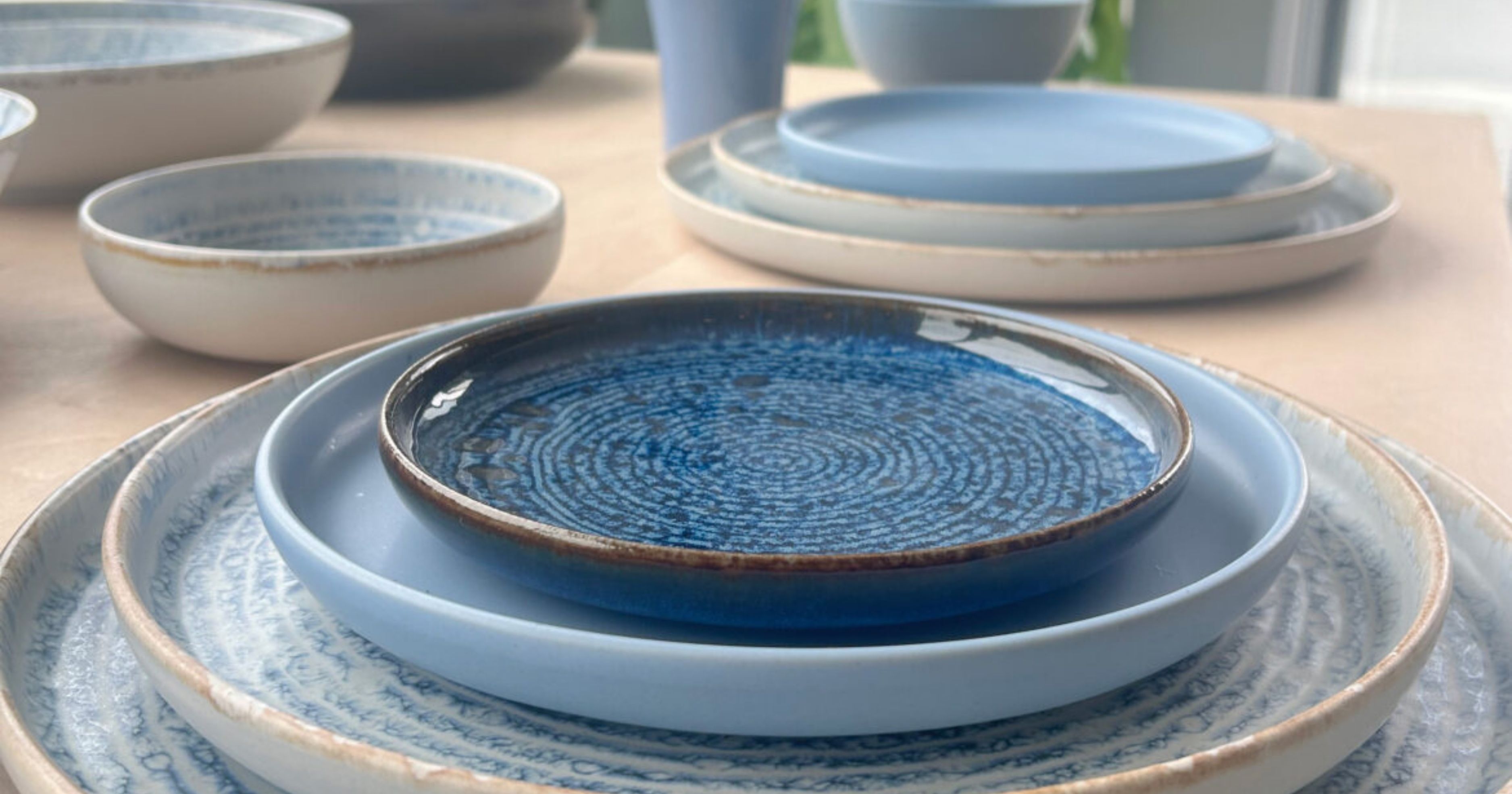
Porcelain Dinnerware: Facts and Features
Porcelain is one of the oldest and most enduring symbols of luxury, status, and elite taste. Invented in China more than 1,400 years ago, it has continued to refine its qualities and appearance — yet its essence as a sophisticated utility item remains the same.
When comparing ceramic vs. porcelain in terms of production, it’s clear that china offers unmatched stability, slightness, and grace. It takes just one key ingredient to make a plate of rare kaolin clay. That’s why Limoges porcelain is so well known for its pure white color and soft, light-transmitting glow.
Another variation is bone china, made with up to 50% bone ash. It’s extra light, super robust, and has that silky, creamy-white glow everyone loves.
Kaolin shows great flexibility for artistic exploration with various finishes and hue treatments.
Many manufacturers combine biscuit with lustrous, glazed elements. Each brand creates and patents its own in-house coloring mixes and watercolor-style pigments for decoration.
One additional notable decorative feature is the use of precious metals such as gold and platinum. This is actually a fairly typical practice to emphasize the item’s luxury, exclusivity, and artistic value.
Nevertheless, modern lines go far beyond being collectibles, because they’re perfectly suitable for regular use: most models are dishwasher- and microwave-safe (as long as there's no metallic decoration).
Some extra facts:
- Strength & durability. It doesn’t crack or wear out over time and can last for decades.
- Non-porous properties. Each article resists moisture absorption, smells, and staining.
- Light to hold, easier to carry, and handle.
Drawbacks to consider:
- Porcelain isn’t exactly a budget-friendly option.
- Even though it’s robust, a hard drop can still crash it.
- Most collections lean toward traditional aesthetics. Those seeking daring, modern, or rustic formats may find fewer options.
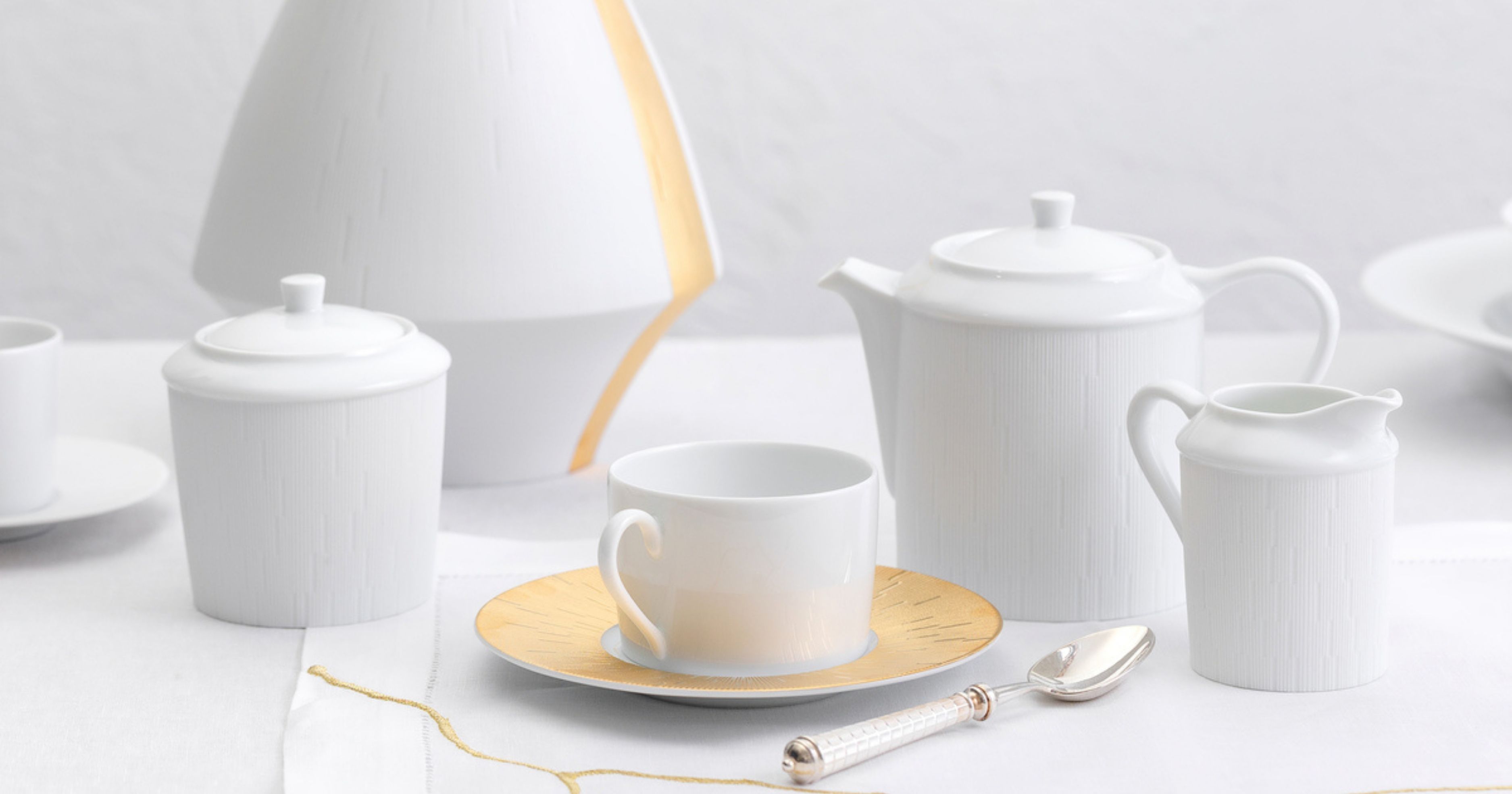
When Is Porcelain the Right Choice?
So, when does it make sense to decide? In the ceramic vs. porcelain quarrel, the latter wins when it comes to elegant or special events. These kinds of luxury tableware always look classy and celebratory: they set the mood and definitely wow your guests.
Such pieces are also commonly given as wedding or anniversary donations, since they’re considered high-end objects and often become part of a family’s legacy.
If you’ve got the budget for extravagant dishes and feel like living the bon vivant life, treat yourself. These plates will look right at home in your kitchen, on your yacht, in your jet, or at your private retreat. Pieces will serve you for years while offering lasting enjoyment. Porcelain justifies its price — delivering not only utility, but also aesthetic amusement with every table setting.
Another advantage is that items are typically more lightweight, which can be beneficial for those prioritizing comfort in everyday handling. Don’t forget the aesthetic side either: the variety of high-end formats lets you choose something that suits your taste, from minimal all-white sets to bold creative displays with gold detailing.
It can also function as a sophisticated element of high-end decor, offering endless opportunities for stylish tablescapes and artistic installations.
Here’s our brief list of top-elegant, good-quality, and reasonably priced porcelain brands available internationally:
- Taitù Milano (Italy): A remarkable Italian brand that stands out with bright, artistic designs and a real eye for visual impact.
- Ginori 1735 (Italy): This iconic Italian brand masterfully brings together timeless elegance, rich color, classical design, and that distinct Italian soul — transforming every piece into a work of art.
- Herend (Hungary): A heritage brand with serious history — they’ve been making hand-painted porcelain in timeless European styles, full of flowers, birds, and golden details.
- Hermès Tableware (France): Modern luxury porcelain featuring signature patterns, geometric designs, and illustrations, often released in limited-edition collections.
- Meissen (Germany): A symbol of old-world craftsmanship, Meissen creates refined European porcelain with graceful forms, delicate hand-painting, and unmatched quality.
- The Rosenthal (Germany): A go-to for design lovers — this line teams up with artists and architects to produce bold, contemporary porcelain collections.
- Bernardaud (France): A prestigious name in porcelain, known worldwide for its hand-finished pieces and innovative design. Expect premium quality, light refined shapes, and standout style.
- Wedgwood (UK): Among other things, the brand is known for its high-quality fine bone china, crafted into classic English tea sets and dinnerware.
- Haviland (France): A leading name in luxury Limoges porcelain, offering ornate detailing and hand-painted artistry, chosen by presidents, embassies, and five-star hotels around the world.
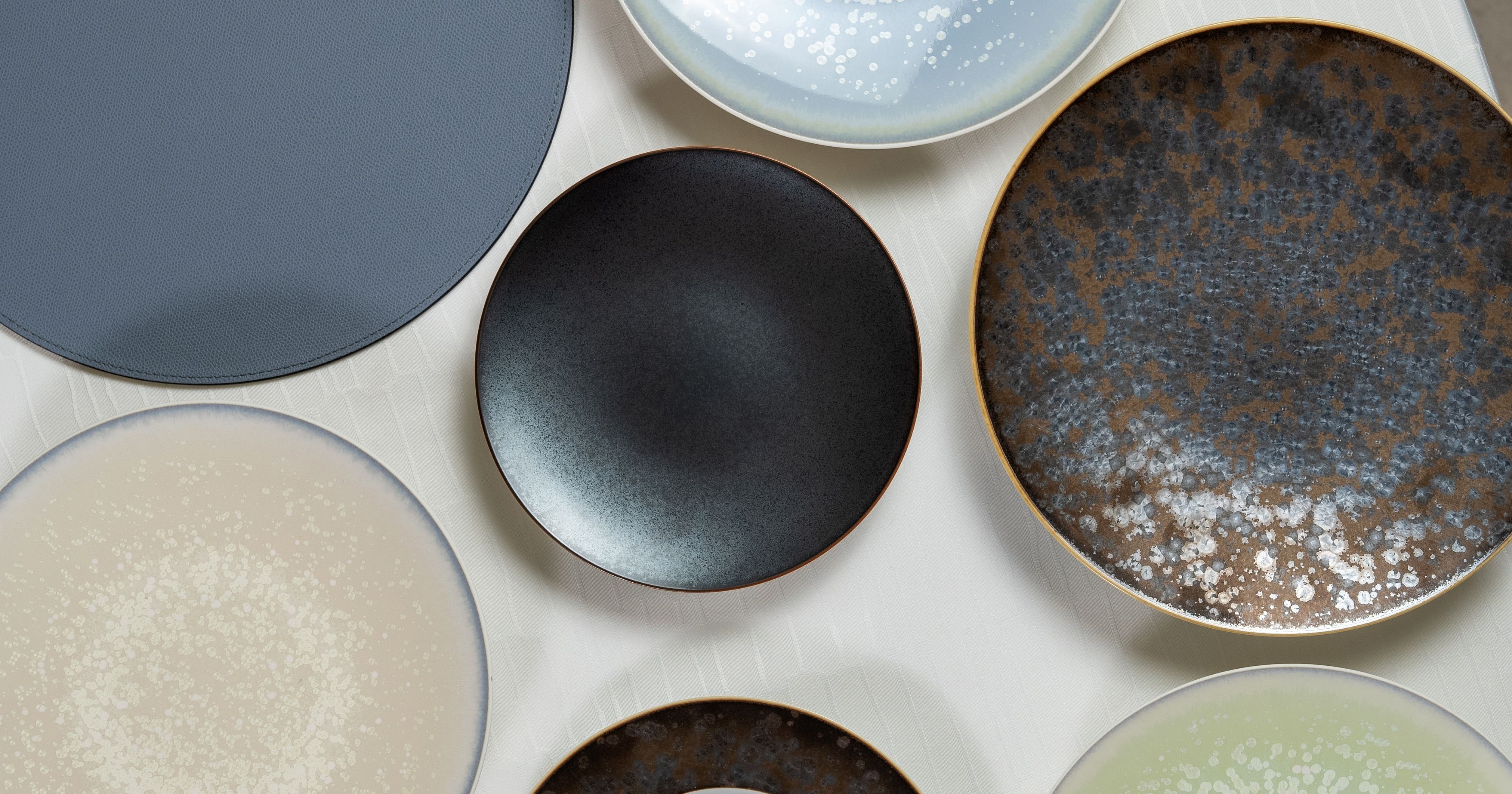
When Is Ceramic the Better Choice?
Such dishes are perfect for anyone who adores that laid-back charm, cozy rustic feel, and lots of coloring and imprint without the formality. Plus, with excellent prices and tons of alternatives out there, it’s easy to build more than one display — say, one for customary use, another with seasonal hues, and maybe even a themed format for specific holidays or moods.
By the way, if you’re wondering, what is stronger, porcelain or ceramic — when it comes to regular use, porcelain clearly wins. But it remains an accessible and easily replaceable alternative, so you won’t have to stress over every single component in your set.
And from a decor viewpoint, ceramic offers lots of versatility. Pretty plates with delightful designs or big, eye-catching bowls work right in with most energetic interior styles.
We’ve gathered some tried-and-true ceramic brands for everyday dining we’d love you to know about:
- Serax (Belgium): A favorite for home use, thanks to creative partnerships with artists and chefs that bring unexpected shapes and rich textures to life.
- COSTA NOVA (Portugal): This brand creates beautiful stoneware and ceramic dinnerware that’s both sturdy and heat-resistant, with a signature touch of Mediterranean coastal elegance.
- Mesa Ceramics (Portugal): A modern factory focused on sustainable ceramic tableware. Their collections feature stylish and practical pieces made from locally sourced Portuguese clay.
- East Fork (USA): This beloved American brand crafts high-quality handmade ceramics that are minimal in design, solid in build, and ideal for day-to-day use.
- Royal Doulton (UK): This iconic British trademark is loved for both its porcelain and ceramic pieces — offering a mix of modern and classic designs that work beautifully in prosaic kitchens or ceremonial dining locations.
- Villeroy & Boch (Germany): Specializing in both porcelain and ceramic stoneware, the brand is praised for its premium quality, long-lasting performance, and versatile setup collections.
- Noritake (Japan): With signature Japanese attention to detail, Noritake delivers graceful ceramic and porcelain dinnerware with a truly amazing aesthetic.
- Lenox (USA): This American brand produces porcelain and ceramic sets designed especially for weddings and celebrations, often accented with gold and elegant embossed imprints.
- Wedgwood (UK): A classic name in ceramics, Wedgwood offers neoclassical charm with a mix of decorative and functional pieces.
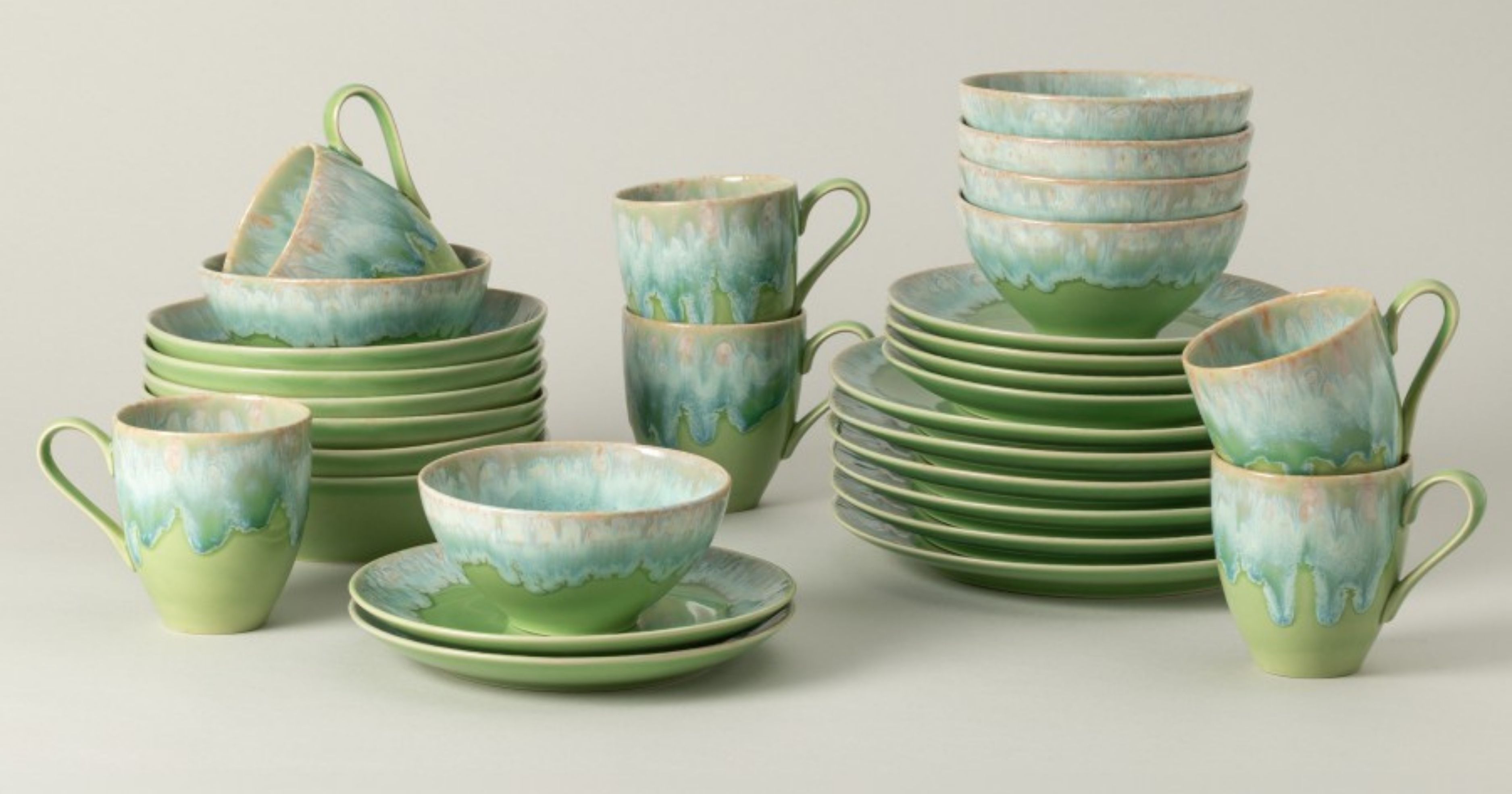
Luxury Porcelain and Ceramic Dinnerware, Curated by MDMAISON
Our project is all about helping you dream up, plan, and create beautiful decor using extra pieces, especially when it comes to dinnerware and table styling.
So if you ask us, porcelain vs. ceramic dishes — which is better for a splendid project? The answer is definitely elite china. The better the kaolin, the craftsmanship, the finish, and the details, the more impressive the plate, and the more refined the overall peek. You can browse and select from the options available on our platform — or get personalized help in choosing the best dinnerware set for your concept.
We’re excited to bring you proposals from some of the biggest reputations in luxury porcelain, such as: Bernardaud, Fürstenberg, Ginori 1735, Haviland, Hering Berlin, J.L Coquet, Jaune de Chrome, Pinto, Raynaud, Robert Haviland & C. Parlon, Rosenthal, and Sieger by Fürstenberg, L’Objet.
The collections from these French and German manufacturers — both heritage names and newer ateliers — open the door to a world of true classiness and style worthy of royalty and aristocracy. Expect 100% handcrafted pieces, intricate detailing, exclusive pigments and finishes, gold and platinum accents, custom glazes, and adornments created by top artists, architects, and even Michelin cooks. Many collections offer personalization, with both historical and trendy design possibilities.
Our ceramic group isn’t as huge, but every fragment is top-tier. We offer the crème de la crème of handcrafted lines— with architect flair and grade that speaks to the most sophisticated tastes.
We’ve curated a selection of spirited, devoted, and emotionally charged displays from Gien and Coralla Maiuri. Their recognizable label DNA characterizes them, refined artistic expression, and a level of functionality that makes it comfortable and satisfying to use.
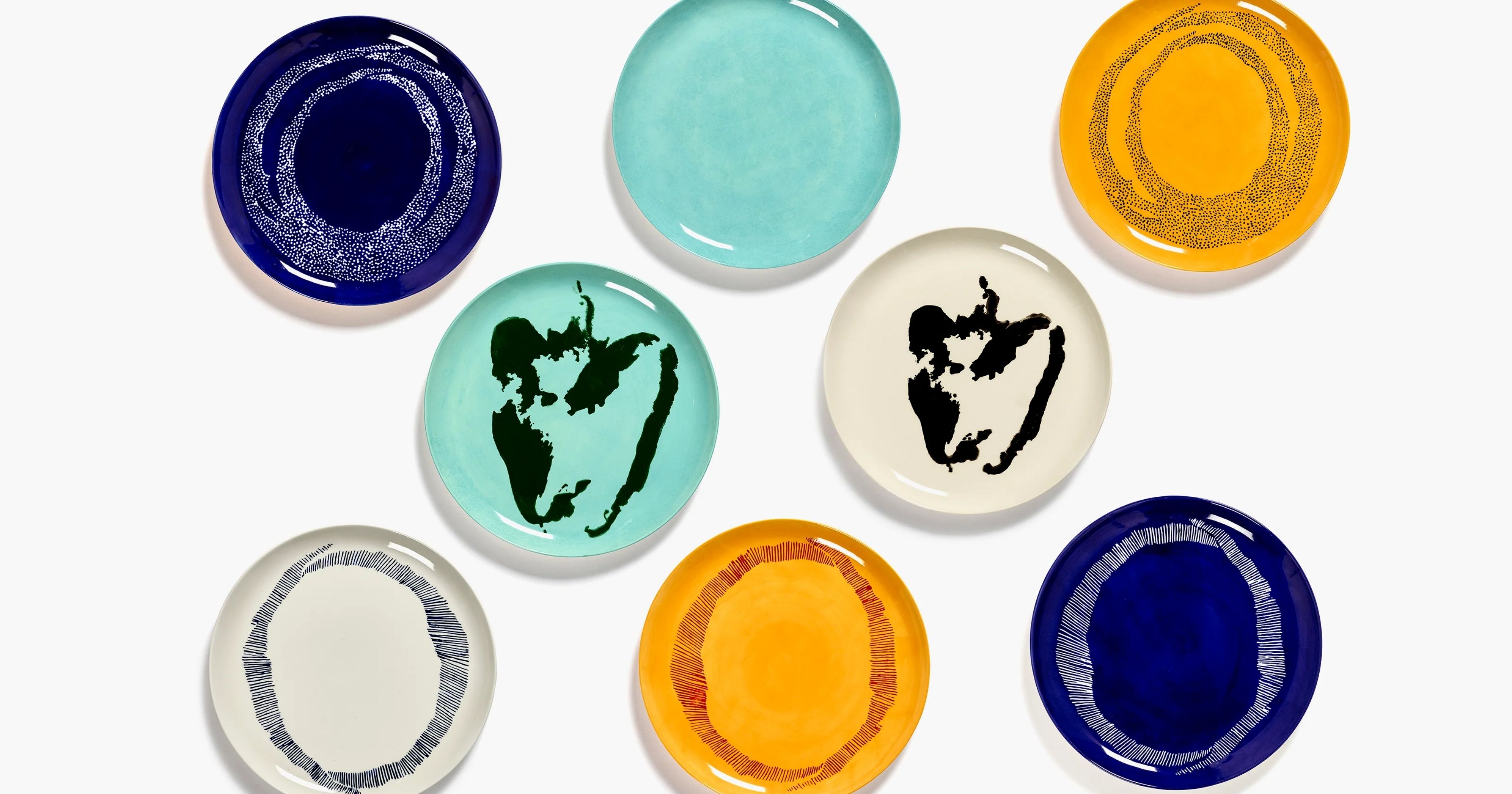
Summary and Recommendations for Your Right Choice
Of course, we’re not here to dictate preferences, as we believe every client should make their own choice when it comes to what's better, ceramic or porcelain, for your dining demands and decorative goals.
But our mission is different: MDMAISON is a curated, progressive concept that redefines luxury, making premium dinnerware and decor more approachable out of the “untouchable” zone and ready to be integrated into fresh, unconventional setup visions.
We are a space where your creative concepts take shape and where inspiration is always within reach.
We also recommend reading our in-depth feature on how to choose luxury dinnerware, where we investigate every nuance and share some of our favorite insider tips.

